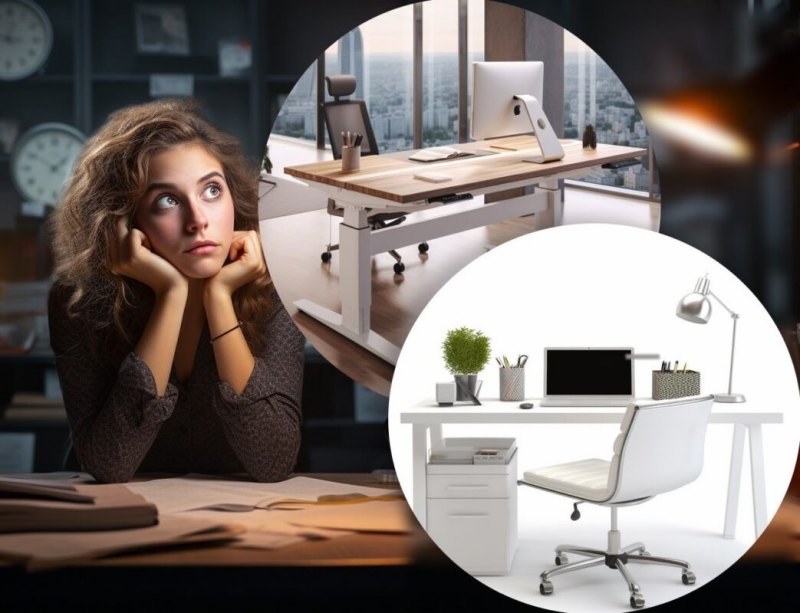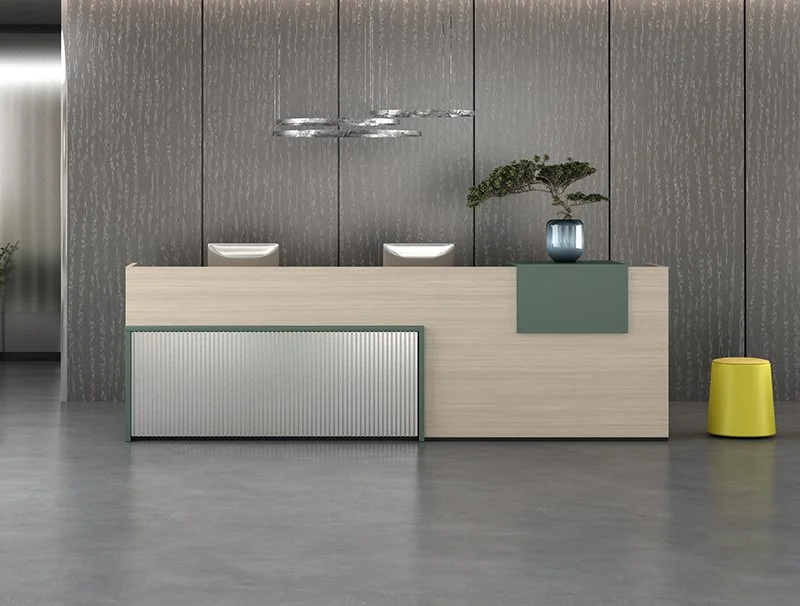When designing an office, one of the most critical decisions involves choosing the right furniture. Among the most significant pieces are reception desks and workstations. Each serves a unique purpose and contributes differently to the overall functionality and aesthetic of the workspace. This article will explore the differences between reception desks and workstations, helping you determine which is best suited for your space.
Understanding Reception Desks
What is a Reception Desk?
A reception desk is typically the first point of contact for visitors entering an office. It is designed to be welcoming and functional, providing a space for receptionists to manage incoming guests, phone calls, and administrative tasks. Reception desks often feature a larger surface area to accommodate computers, phones, and other office supplies. The design of a reception desk can vary widely, from sleek and modern to traditional and ornate, depending on the company's branding and the atmosphere they wish to create.
Key Features of Reception Desks
1. Design and Aesthetics: Reception desks are often designed to reflect the company's brand and culture. They can range from sleek and modern to traditional and ornate, depending on the desired impression. A well-designed reception desk can set the tone for the entire office, making it essential to choose a style that aligns with your brand identity.
2. Functionality: These desks are equipped with storage options, such as drawers and cabinets, to keep the reception area organized. They may also include features like built-in lighting or cable management systems. The functionality of a reception desk is crucial, as it needs to support the receptionist in their daily tasks while maintaining a tidy appearance.
3. Accessibility: A well-designed reception desk should be accessible to all visitors, including those with disabilities. This may involve having a lower section for wheelchair users or ensuring there is enough space for movement. Accessibility is not just a legal requirement; it also reflects a company's commitment to inclusivity and customer service.
Benefits of Reception Desks
- First Impressions: A stylish reception desk can create a positive first impression for clients and visitors. It serves as a visual representation of the company's professionalism and attention to detail.
- Organization: It helps keep the reception area organized, allowing receptionists to manage their tasks efficiently. An organized reception area can enhance workflow and reduce stress for the staff.
- Brand Representation: The design of the reception desk can reflect the company's identity and values. A well-chosen desk can communicate the company's ethos and create a memorable experience for visitors.
Understanding Workstations
What is a Workstation?
A workstation is a designated area where employees perform their tasks. Unlike reception desks, workstations are typically more functional and less focused on aesthetics. They are designed for productivity and can vary significantly in size and layout. Workstations can be individual desks or part of a larger open-plan layout, depending on the company's needs and culture.
Key Features of Workstations
1. Ergonomics: Workstations are often designed with ergonomics in mind, featuring adjustable chairs and desks to promote comfort and reduce strain during long working hours. Ergonomic design is essential for maintaining employee health and productivity, as it helps prevent injuries related to poor posture.
2. Flexibility: Many modern workstations are modular, allowing for easy reconfiguration as team sizes or project needs change. This flexibility is particularly beneficial in dynamic work environments where teams may shift frequently.
3. Technology Integration: Workstations are equipped with the necessary technology, such as computers, monitors, and charging stations, to facilitate work. The integration of technology into workstations is crucial for supporting modern workflows and ensuring employees have the tools they need to succeed.
Benefits of Workstations
- Productivity: A well-designed workstation can enhance employee productivity by providing a comfortable and efficient workspace. When employees have a dedicated area that meets their needs, they are more likely to focus and perform at their best.
- Collaboration: Open-plan workstations can foster collaboration among team members, encouraging communication and teamwork. This collaborative environment can lead to increased creativity and innovation, as employees share ideas and work together on projects.
- Space Efficiency: Workstations can be designed to maximize the use of available space, making them ideal for smaller offices. Efficient use of space is critical in today's work environment, where real estate costs can be high.

Comparing Reception Desks and Workstations
Purpose and Functionality
The primary difference between reception desks and workstations lies in their purpose. Reception desks are designed for welcoming visitors and managing front-office tasks, while workstations are tailored for employee productivity. Understanding these distinct roles is essential for creating a functional office layout that meets the needs of both visitors and employees.
Design Considerations
- Reception Desks: Should be visually appealing and reflect the company's brand. They often have a more elaborate design and may include decorative elements. The design of a reception desk should not only be functional but also create a welcoming atmosphere for visitors.
- Workstations: Focus on functionality and ergonomics. They are typically more straightforward in design, prioritizing comfort and efficiency over aesthetics. The design of workstations should facilitate productivity and collaboration, ensuring that employees have everything they need within reach.
Space Requirements
Reception desks usually require more space due to their larger size and the need for a welcoming area. In contrast, workstations can be more compact and arranged in various configurations to fit the available office layout. When planning your office space, it's essential to consider how much room you have for each type of furniture and how it will impact the overall flow of the office.
Choosing the Right Option for Your Space
Assessing Your Needs
When deciding between a reception desk and a workstation, consider the following factors:
1. Office Size: Larger offices may benefit from both a reception desk and multiple workstations, while smaller spaces might require a more integrated approach. Assessing the size of your office will help you determine how to allocate space effectively.
2. Visitor Traffic: If your office receives a high volume of visitors, investing in a quality reception desk is essential for creating a positive first impression. A busy reception area may also require additional staff or resources to manage visitor flow effectively.
3. Employee Collaboration: If teamwork is a priority, consider open workstations that encourage interaction among employees. Collaborative workspaces can enhance communication and foster a sense of community within the office.
Budget Considerations
Budget is always a crucial factor in office design. Reception desks can be more expensive due to their design and functionality. Workstations, especially modular options, can offer more flexibility in terms of cost. It's important to balance quality and budget, ensuring that you invest in furniture that meets your needs without overspending.
Future Growth
Consider your company's growth potential. If you anticipate expanding your team, investing in flexible workstations that can be easily reconfigured may be more beneficial than a static reception desk. Planning for future growth can save you money and time in the long run, as you won't need to replace furniture as your needs change.
Conclusion
In conclusion, both reception desks and workstations play vital roles in an office environment. The choice between the two depends on your specific needs, office layout, and company culture. A well-chosen reception desk can enhance the visitor experience and reflect your brand, while efficient workstations can boost employee productivity and collaboration.
Ultimately, the best approach may involve a combination of both, ensuring that your office is functional, welcoming, and conducive to success. By carefully considering the unique features and benefits of each option, you can create a workspace that meets the needs of both your employees and your visitors.

Frequently Asked Questions
1. What is the primary function of a reception desk?
The primary function of a reception desk is to serve as the first point of contact for visitors, providing a space for receptionists to manage guest interactions and administrative tasks.
2. How do I choose the right reception desk for my office?
Consider factors such as office size, design aesthetics, functionality, and accessibility when selecting a reception desk.
3. What are the benefits of using workstations in an office?
Workstations enhance productivity, promote collaboration, and can be designed to maximize space efficiency.
4. Can I have both reception desks and workstations in my office?
Yes, many offices benefit from having both, as they serve different purposes and can complement each other in creating a functional workspace.
5. How can I ensure my reception desk is accessible to all visitors?
Design your reception desk with accessibility in mind, including lower sections for wheelchair users and ensuring there is enough space for movement.





